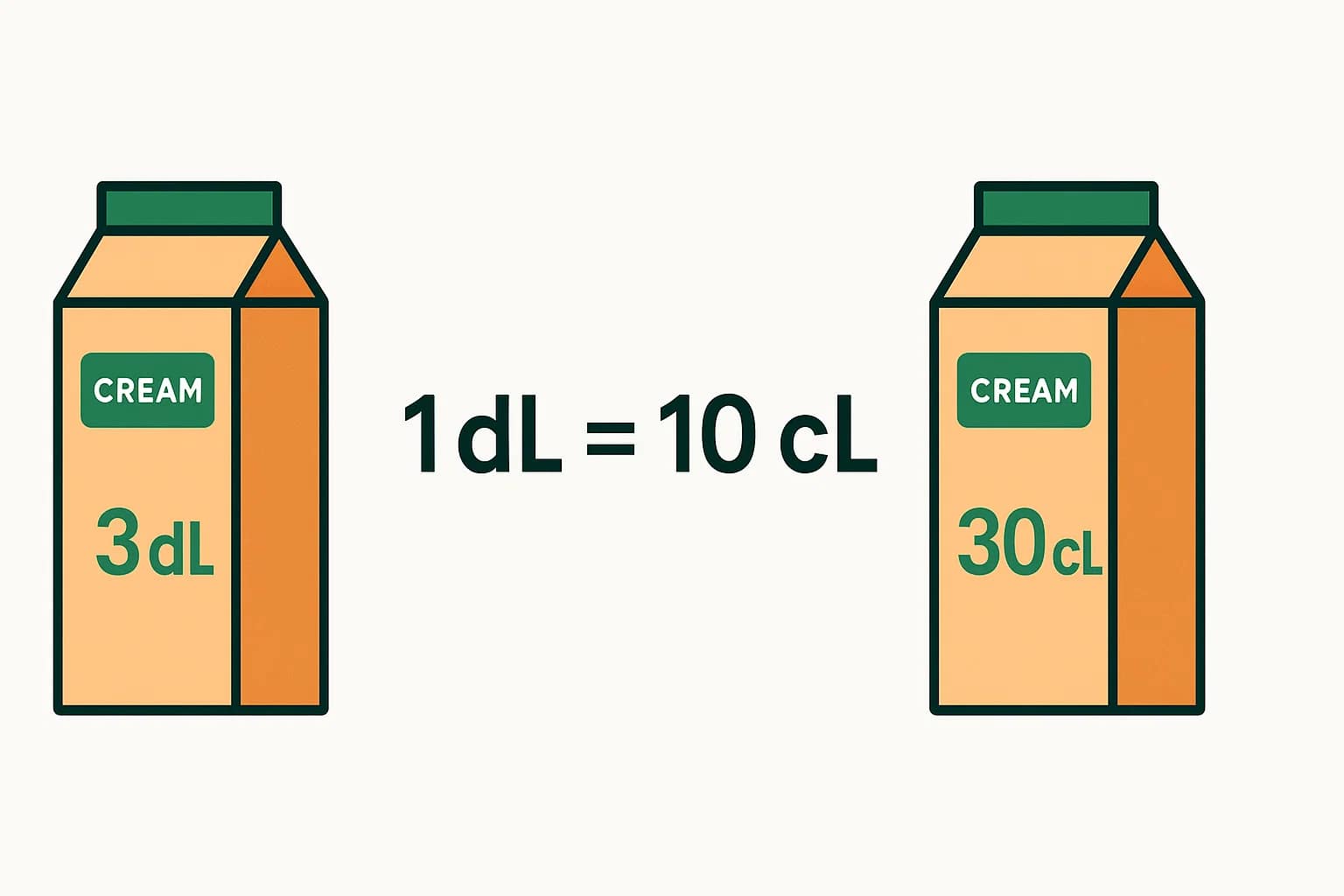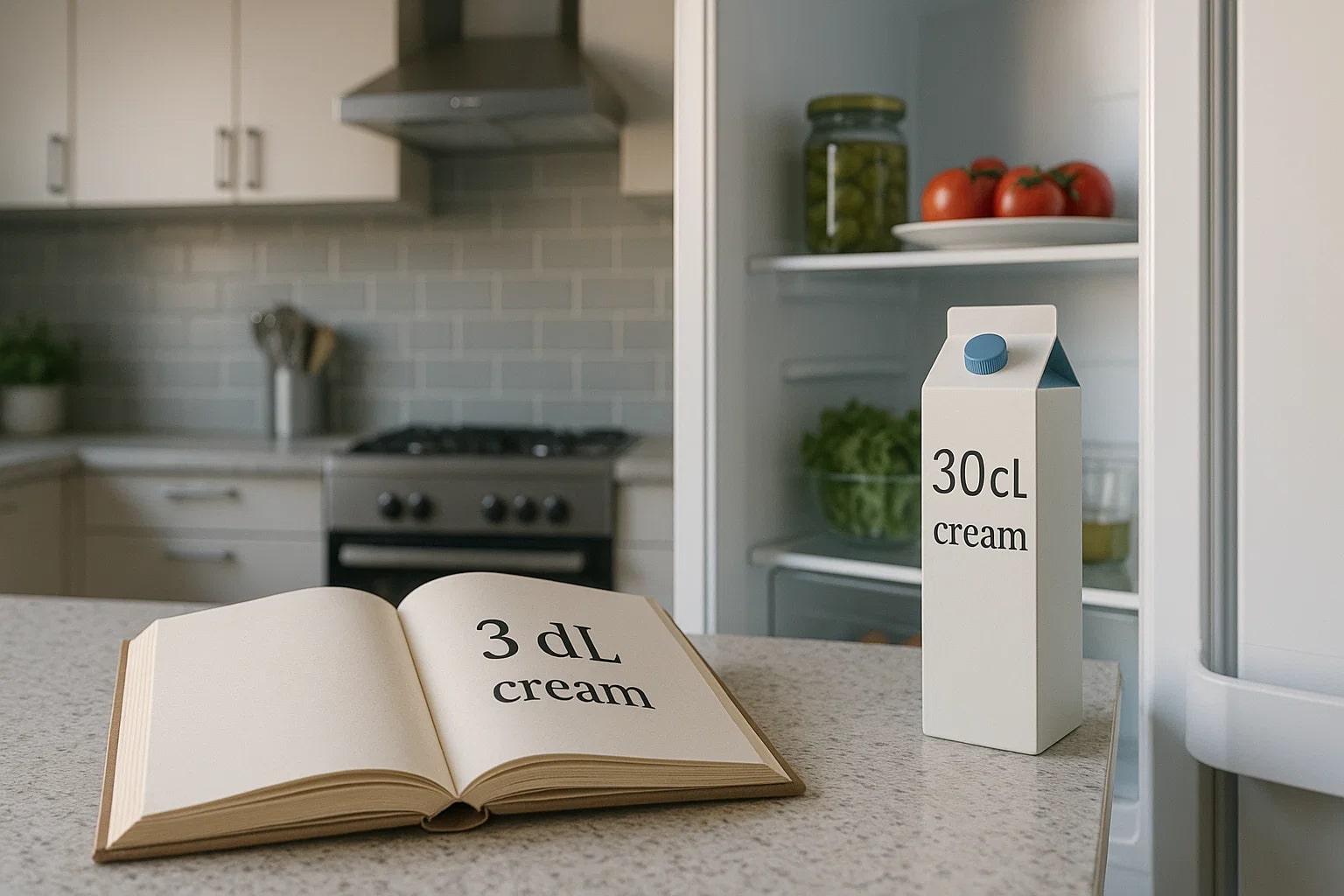deciliter to centiliter – How to convert dL to cL
The conversion between deciliters and centiliters is a simple one, but it shows up in recipes, beverage labeling, and lab measurements. Deciliters are used for medium volumes, while centiliters break things down into smaller, more precise values. Let’s see how they connect.
What is a deciliter (dL)?
A deciliter equals one tenth of a liter (1⁄10 L). It is often used in European cookbooks and drink recipes, for instance noting 2 dL of milk or 3 dL of wine.
What is a centiliter (cL)?
A centiliter equals one hundredth of a liter (1⁄100 L). It appears often on beverage bottles and nutrition labels. For example, a soda can labeled 33 cL equals 3.3 dL.
Conversion formula – deciliter to centiliter
The relationship is based on the decimal structure of the metric system.
The base equivalence is:1 dL = 10 cL
To convert deciliters to centiliters:1 deciliter = centiliter × 10
Examples:
2 dL = 20 cL

If you need quick conversions beyond dL and cL, Jetcalculator’s Volume Converter and full set of Conversion Tools make switching between units fast and reliable.
Do you know?
-
In European kitchens: Recipes often use dL instead of mL, so a line that calls for 2 dL flour is the same as 20 cL flour.
-
On beverage bottles: Labels for juice, soda, or wine often read in cL — like 75 cL for a wine bottle, which equals 7.5 dL.
-
In science labs: Smaller lab samples may be recorded in cL, but stock solutions or recipe-style instructions in research notes often use dL.
When recipes meet labels
This conversion often appears in everyday life when cooking or pouring drinks. A European cookbook may call for 3 dL of cream, while the carton in your fridge is labeled 30 cL. Both describe the same volume — you just need the conversion to see it clearly.
It also bridges food service and packaging. Restaurants sometimes write storage quantities in deciliters for clarity in recipes, while suppliers use centiliters for precision in labeling.

One formula, two perspectives
The formula 1 dL = 10 cL shows how the metric system balances convenience and precision. Deciliters simplify recipes and instructions, while centiliters give packaging and labeling a finer scale.
By switching easily between them, you connect two practical perspectives — one for cooking and everyday use, the other for accurate labeling and scientific detail.

